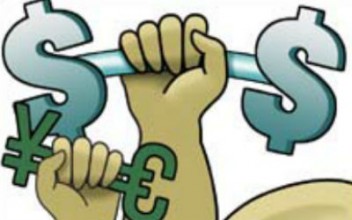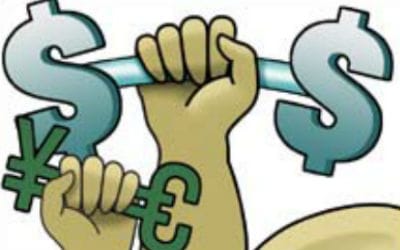In any contest, there is almost always a favourite. Sometimes, competitors will be quite evenly matched, but more often than not there is one that is much more likely to win than the other. For example, if the Brazil soccer team was playing against Spain, it could go either way, but if they were playing San Marino, then you would bet your house that they would win that contest.
 This can be a good analogy to use in terms of currency trading. Because currencies are always traded in pairs, the value of that currency pair can be considered the ‘score’ in the contest between those two currencies. Every time you trade a currency pair, you are effectively buying one currency and shorting the other, with the expectation that one currency will beat the other. Therefore, it stands to reason that the most predictable trades – the ones with the highest probabilities – involve currency pairs that match a strong currency with a weak one.
This can be a good analogy to use in terms of currency trading. Because currencies are always traded in pairs, the value of that currency pair can be considered the ‘score’ in the contest between those two currencies. Every time you trade a currency pair, you are effectively buying one currency and shorting the other, with the expectation that one currency will beat the other. Therefore, it stands to reason that the most predictable trades – the ones with the highest probabilities – involve currency pairs that match a strong currency with a weak one.
This isn’t as hard as it sounds to gauge, despite the volatility in the forex market, as the market deals primarily with countries whose economic outlooks change relatively slowly over time. Every day, economic data relating to the most actively traded currencies is released, acting as a kind of ‘scorecard’ for for that country. The more positive these reports are, the better that country is doing from an economic standpoint. Conversely, the more negative these reports are, the weaker that country’s economy is.
The ramifications of these reports go deeper than the data, however. A strong report gives a central bank added impetus to increase interest rates, increasing the yield of investments denominated in that currency. Weak reports, on the other hand, give a central bank less flexibility when it comes to raising interest rates, and if the data is very weak indeed it may prompt the central bank to lower interest rates. Future changes to interest rates are one of the most important factors in the currency market, as it increases the yield – and therefore the attractiveness – of a country’s currency.
As well as looking at the economic data, you can also compare the interest rate trajectories for currencies in order to determine which ones are strong and weak. For example, the EUR/GBP pairing broke out of its range-bound pattern in early 2006 because Europe was beginning to raise interest rates as a result of improving economic growth.
The big difference in interest rate trajectories between the two currencies pushed the EUR/GBP higher and made the pairing, which is traditionally range-bound, into a trending currency pair for a few months. It was easy to anticipate this change, which made EUR/GBP a clear example of pairing a strong currency with a weak currency. Because the slow evolution of economic trends means that strength and weakness can last quite a long time, pairing strong currencies with weak ones can be one of the most reliable currency trading strategies.
Tradersdna is a leading digital and social media platform for traders and investors. Tradersdna offers premiere resources for trading and investing education, digital resources for personal finance, market analysis and free trading guides. More about TradersDNA Features: What Does It Take to Become an Aggressive Trader? | Everything You Need to Know About White Label Trading Software | Advantages of Automated Forex Trading









